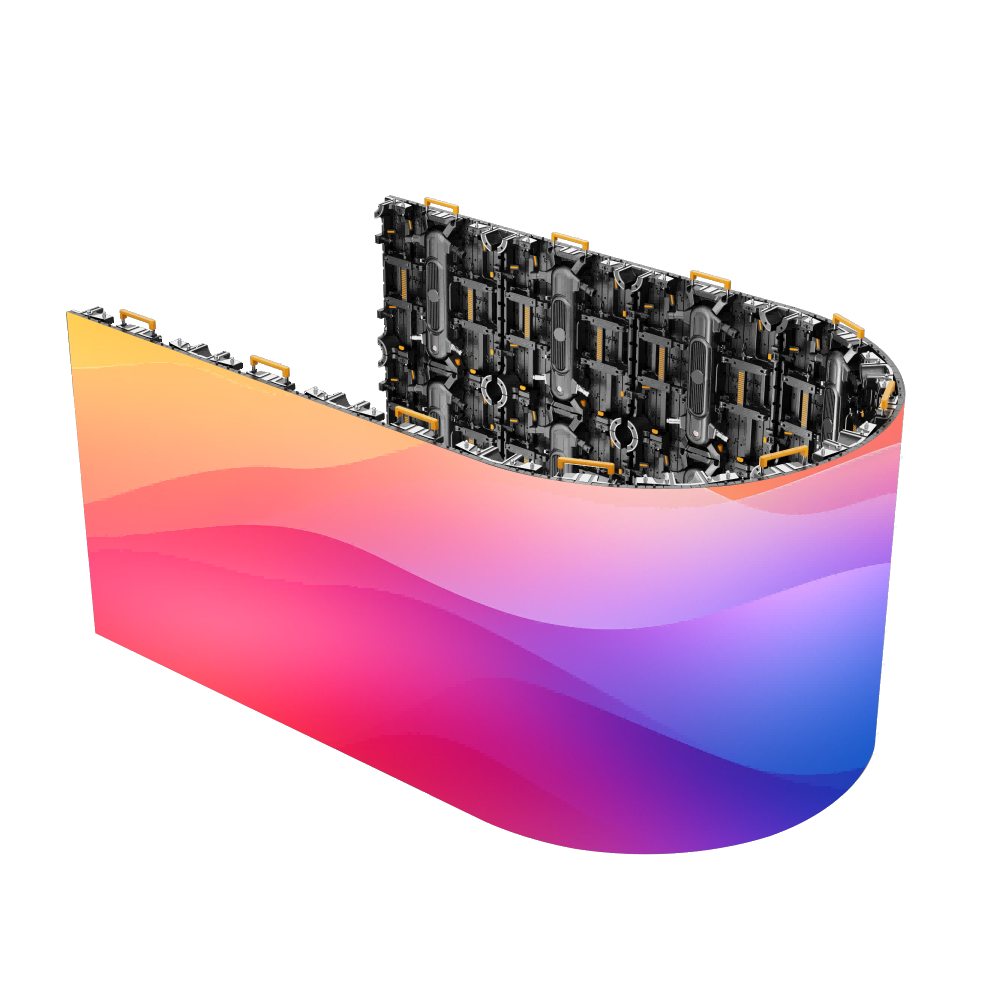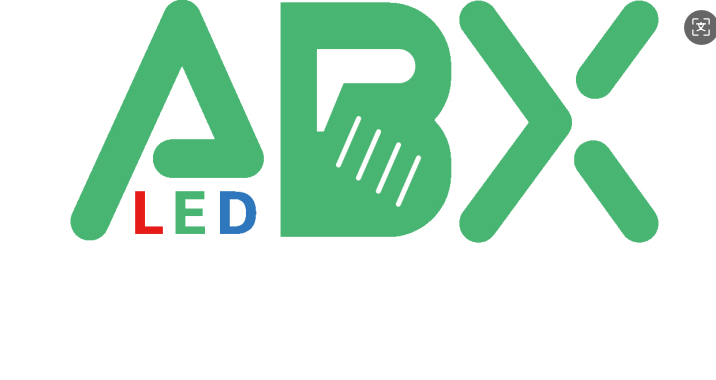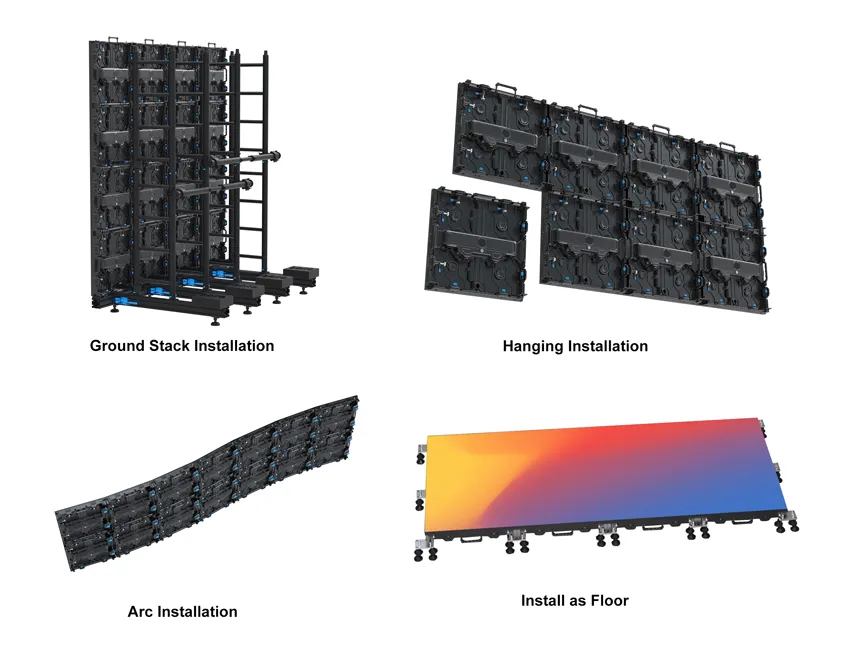Understanding LED Video Panel Technology Basics
Pixel Pitch: The Foundation of Image Clarity
The pixel pitch is an important factor of LED video panel technology, which measures the center-to-center distance between pixels. The reason why this metric is of useful is that it directly affects the resolution and clarity of the image that is displayed. With LEDs, the smaller the pixel pitch, the higher the resolution and clarity of the display’s image. This is the same concept as “HD”, or high-definition, television; the more pixels, the better your image looks. So, with an LED display with a smaller pixel pitch, you’re increasing the number of LEDs per unit area. This means you’re improving your image quality and ensuring it doesn’t appear pixelated up close. Ideal for auditoriums, large conference rooms or broadcast studios, LED displays are ideal for applications where you have control over ambient light. For example, standard pixel pitches can vary from approximately 1mm for high definition indoors, to 10mm and higher for outdoor displays. But remember that as the pixel pitch number drops, the cost of the display and the LED rental screen itself go up. This makes the decision of pixel pitch critical in relation to the viewing distance and available budget, particularly when buying from a quality LED video panel supplier.
Nits & Refresh Rates: Essential Performance Metrics
When it comes to LED display technology, “nits” specify the brightness of an LED panel. Luminance is important to be seen and can differentiate an eye catching display from one that dwarf into the display background. Higher nits are especially important for outdoor LED rental displays, as sunlight can blow out the color on weaker screens. Refresh rates are just as critical, as this is what will determine the smoothness of motion on the screen. Refresh rates higher than 60Hz can display motion more smoothly and more sharpness in videos that have fast movement. For that reason, 800-1500 nits is generally recommended for indoor applications, and outdoor manufactures promote over 6500 nits to ensure brightness is maximised. Market research shows a high refresh rate can reduce motion blur, ultimately improving picture quality, important for sports and live content. When doing LED screen rental, this is useful to know as it will directly contribute to how good your image will appear on your screens.
Key Selection Criteria for LED Video Panels
Indoor vs Outdoor Display Requirements
Deciding between indoor vs. outdoor an LED display comes down to knowing the differences between brightness and weather resistant. Outdoor displays need to be bright enough to compete with the sun, and weather resistant to be operational in rain or dust. For example, the characteristics of brightness in outdoor LED screens are that they have about 5,000 nits or more in order to appear visible even in bright environments, outdoor LED screens have 1,500 to 2,000 nits. Environmental factors like sunlight exposure and humidity, however, are the driving force of the outdoor display selection. Successful installations has already proven the importance of weatherproofing and bright, like outdoor LED screens in the sport fields that vulnerable to different climate effects. You need to follow the guidance to make the right choice of display so it fits within the place of use.
Optimal Viewing Distance Calculations
Knowledge of optimal viewing distances is important when considering the choice of LED panels, especially when pixel pitch and resolution are being discussed. They even go into calculating viewing distances to make sure you’re set up for the most ideal distance when it comes to the distance between pixels and resolution for image clarity. Popular formula is 20-30 times the Screen Height to determine maximum viewing distances where a person perceives visual data without tendency to perceive the pixels. Event planners typically advise on such calculations in terms of audience and space, and stress their relevance in practice. Any room or configuration will benefit from the correct application of viewing distance factors (room size, audience size and screen size).
Curved vs Flat Panel Configurations
The choice between curved and flat LED panels requires weighing the pros and cons. Bendy panels can be used to enhance people’s viewing experience by providing a wider panorama and a more immersive environment, for example for theaters and VR setups. Meanwhile, flat panels are favored due to their simplicity and ready-to-use installation that enables them to be used for simple applications such as advertising sign and the like. Choice of configurations may affect the complexity of installation, maintenance, and overall cost, as curved panels might demand higher levels of installation skill. The industry insider's panel discussed “The trend of Curved Display required environment for increased interest level of viewers” and the revolutionary effect they can have on audience engagement. Whether to get curved or flat panels is a decision that should be based on planned use cases and the budget.
ABXLED RF500 Series: Premium Rental LED Solution
Ultra-Lightweight Design for Mobile Installations
Other Physical Characteristics: The ABXLED RF500 Series is very lightweight for mobile installations. 2pcs LED panels, only 4.68KG/cabinet, it allows one person to handle installation; Product features: (1) Product weight is very light: 4.68KG/panel, can work excellent under vibration. Since it doesn't require the large amount of manpower or expensive logistics of a typical LED build, the RF500 Series offers an easier option. And it’s no wonder: users rave about how this design has streamlined their processes, enabling them to pull off friction- free mobile presentations with substantially fewer people.
45° Arc Capability & Weather Resistance
The RF500 Series' 45° arc ability is a game changer for creating curved LED displays. This key feature enables you to enjoy a wide contemporary viewing experience with a new level of life-like dimension and depth. Moreover, its sturdy weatherproofing also allows outdoor use come rain or shine. The RF500 shines in challenging environments such as outdoor events, even in the rain and sunshine, as proven in case studies that demonstrate how it performs and brings viewers closer to the action.
800-4500 Nits Dynamic Brightness Range
This line has been called the RF500 Series and it is capable of emitting between 800 and 4500 nits dynamic brightness depending on the needs of the event. It can be a daytime game or a night time concert, with this this brightness adjustability, all your fans can enjoy it in the best way possible. The statistics show that people prefer brightness customized to an environment, which underlines the significance of customized LED performance. Examples from the field Stressing how the RF500 is able to effectively control brightness to accommodate audience expectations, wherever the event – be it a rock concert or corporate presentation.

Installation Considerations for Different Environments
Rigging Requirements for Stage Productions
Theater installation of LED screens Theatre installation LED screens Theatre and LED ScreensIn the theater installing LED screens it is important to consider the rigging which is required for LED screens to be installed safely and securily. Correct mounting techniques will ensure that the displays are stable, and positioned perfectly in-synch. Industry standards such as ANSI E1. 21, which pertains to temporary outdoor structures are important in such safety issues related to rigging work. And using modern rigging methods, such as modular truss rigs used in things like Broadway shows or big concerts, works really well. These systems not only improve safety, but also provide flexible setups that can be modified according to the need of the production.
Power Consumption & Thermal Management
The power consumption is also an important issue, since a higher power consumption leads to higher operational costs for LED panels. High power LED screens may require a lot electricity, so power supply logistics need to be prepared. Effective thermal management techniques are essential to cool the components so as to avoid overheating and for the long life and performance of the components. Fan cooling and heat sinks are used in high performance situations. A real-world trial on a large sports event proved that application of these thermal measures extended service life of the LED’s and allowed for optimal long-term performance also under heavy use conditions.
Signal Processing for Multi-Panel Arrays
Signal processing is important for synchronizing multi-panel displays for smooth video transitions across large arrays. Problems of video signal distribution are latency and loss of signal integrity over long connections. These problems are offset by solutions such as the fiber-optic transmission, as well as advanced processors that provide excellent image quality. I'd recommend to buy for the best signal integrity, go for equipment that meets the most recent video signal standards. This is required to keep synchronization between multiple devices and improve the overall visual impact for more complex setups, like during outdoor concerts and events.
Choosing a Reliable LED Display Supplier
Certification & Warranty Considerations
When choosing a partner for LED displays, one of the first things I always look for is what certifications they have. Such certifications include ISO standards or CE marks, which reveal that the products have satisfied safety and quality standards. They are a proof of supplier’s dedication to quality guarantee standards and bring on trust and confidence from the customers in different parts of the world. Also important are guarantees that minimize the risk and financial impact. Standard warranty lengths are 2-5 years and should be covering major parts/components, repairs, and in some cases even replacements. Third-party opinions regularly point out that the reliability of a supplier can greatly contribute to the performance of any LED applications deployed. By industry's research, vendors with strong certifications and guarantees can increase the confidence of their customer base.
Scalability for Future Expansion Needs
With the constantly changing LED display market, scalability has never been more important. I believe systems need to be scalable in the sense that upgrades can be made relatively easily, without completely starting from scratch which is essential for any business looking to grow. For example, modular assembly also allows parts of the display to be simply added or reconfigured to satisfy a variety of changing needs. Design innovations such as these demonstrate the value of the flexibility in LED display technology. When evaluating whether a supplier can grow with us in the future or be more collaborative with us, our primary concern is their investment for R&D, customization, and records of what kind of projects they have succeeded in. These factors make certain that the supplier is able to support my ongoing requirements and expansion in an efficient way.
Maintenance Support Packages
In an effort to maximize performance and minimize downtime, reputable LED display providers of LED welcome signs often offer full-service maintenance packages. Normally these bundles comprise of planned visits, replacement parts and emergency repairs. I value response time, experience level, and availability of resources in those support plans. The advantages of such plans become clear when considering a potential executed running, for example, a stadium for which maintenance services allowed continuous use and improved display quality in a field case. “Complete support is a big part of how we deliver peace of mind and the ability to believe that if a technical problem ever does arise, it can be immediately addressed in order for the LED system to operate optimally, and so that it doesn’t cause downtime which will minimize ROI.

